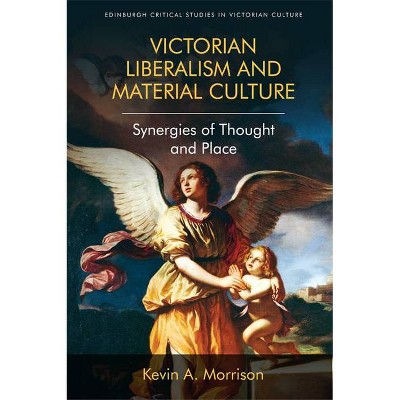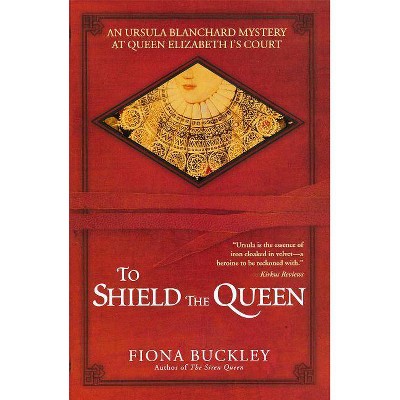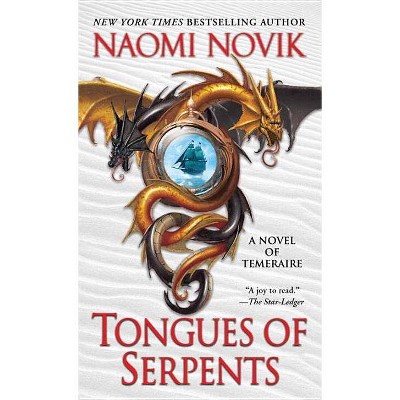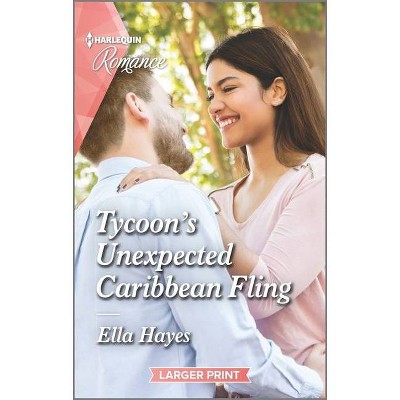The Victorian Male Body - (Edinburgh Critical Studies in Victorian Culture) by Joanne Ella Parsons & Ruth Heholt (Hardcover)

Similar Products
Products of same category from the store
AllProduct info
<p/><br></br><p><b> About the Book </b></p></br></br><p><em>The Victorian Male Body</em> examines some of the main expressions and practices of Victorian masculinity and its embodied physicality.</p><p/><br></br><p><b> Book Synopsis </b></p></br></br><p><strong>A bold study on the very epicentre of Victorian ideology: the white, male body</strong> </p> <p><em>The Victorian Male Body</em> examines some of the main expressions and practices of Victorian masculinity and its embodied physicality. The white, and frequently middle class, male body was often normalised as the epitome of Victorian values. Whilst there has been a long and fruitful discussion around the concept of the 'too-visible' body of the colonised subject and the expectations placed on women's bodies, the idealised male body has received less attention in scholarly discussions. Through its examination of a broad range of Victorian literary and cultural texts, this new collection opens up a previously neglected field of study with a scrutinising focus on what is arguably the ideologically most important body in Victorian society. </p> <p>This collection provides a wide variety of essays on different aspects of Victorian literature and culture, considering the variety of forms that this 'idealised' male body actually encompassed: fat, starving or disabled bodies, the ghostly figure, the 'othered' body, and the developing body of the schoolboy. The chapters in this book offer a detailed and clear reassessment of the Victorian concepts of manliness, masculinity, homosociality, morality, action, and adventure.</p> <p><strong>Key Features</strong></p> <ul> <li>Provides a wide variety of essays on different aspects of Victorian literature and culture with subjects ranging from nature poetry, disability and pirates, fat and thin men, ghost soldiers and popular magazines</li> <li>Opens up a neglected field of study with a scrutinizing focus on the ideologically most important body in Victorian society</li> <li>Allows a re-evaluation of other areas of Victorian culture such as colonialism and debates about class, religion and science</li> <li>Enables a detailed and clear reassessment of the Victorian concepts of manliness, masculinity, homosociality, morality, action, and adventure</li> <p></p></ul> <p> </p><p/><br></br><p><b> From the Back Cover </b></p></br></br>'The Victorian Male Body provides a fascinating and erudite assessment of the white middle-class Victorian male body in all its complex diversity. Specific chapters explore bodies which are young, damaged, spectral, ill and well-dressed. The range of coverage is excellent in what is a critically important collection of essays.' Andrew Smith, University of Sheffield A bold study on the very epicentre of Victorian ideology: the white, male body The Victorian Male Body examines some of the main expressions and practices of Victorian masculinity and its embodied physicality. The white, and frequently middle class, male body was often normalised as the epitome of Victorian values. Whilst there has been a long and fruitful discussion around the concept of the 'too-visible' body of the colonised subject and the expectations placed on women's bodies, the idealised male body has received less attention in scholarly discussions. Through its examination of a broad range of Victorian literary and cultural texts, this new collection opens up a previously neglected field of study scrutinising what is arguably the ideologically most important body in Victorian society. This collection provides a wide variety of essays on different aspects of Victorian literature and culture. Considering the variety of forms that this 'idealised' male body actually encompassed - fat, starving or disabled bodies, the ghostly figure, the 'othered' body, and the developing body of the schoolboy - this book offers a detailed and clear reassessment of the Victorian concepts of manliness, masculinity, homosociality, morality, action and adventure. Joanne Ella Parsons is an Associate Lecturer at Bath Spa University. Ruth Heholt is Senior Lecturer in English at Falmouth University. Cover image: Men's fashion 1850, From Le Follet (c) akg-images Cover design: [EUP logo] edinburghuniversitypress.com ISBN 978-1-4744-2860-6 Barcode<p/><br></br><p><b> Review Quotes </b></p></br></br><br>Scholars and researchers of Victorian literature and culture will find this book useful, engaging, and beneficial as it reveals the complexity and diversity of men along with their anxieties, fears, desires, impulses, and transgressions.--Lacey Sparks, University of Southern Maine "Victorian Studies, 2019 "<br><p/><br></br><p><b> About the Author </b></p></br></br><p>Joanne Ella Parsons is Lecturer at Bath Spa University. She is the editor of the <i>Wilkie Collins journal</i>, and her publications include Muller, N and J. Parsons (eds.) <i>Nineteenth-Century Contexts, Special Issue: The Male Body in Victorian Literature and Culture</i> 36.4 (September 2014) and Parsons, Joanne Ella. <i>'Surtees' 'Eating Englishness and Causing Chaos: Food and the Body of the Fat Man in R. S. Surtees' Jorrocks' Jaunts and Jollities, Handley Cross and Hillingdon Hall' Nineteenth-Century Contexts</i> 36.4 (September 2014). <p>Ruth Heholt is Senior Lecturer in English at Falmouth University. Her publications include edited scholarly edition of <i>The Story of Lilly Dawson, by Catherine Crowe</i> (Victorian Secrets Press, 2015), <i>Haunted Landscapes: Super-Nature and the Environment</i> Ruth Heholt and Niamh Downing (eds), (Rowman Littlefield), and <i>Gothic Localities: Dark Places in the Provinces and Margins of the British Isles</i>, Ruth Heholt and William Hughes (eds), (University of Wales Press).<p>
Price History
Price Archive shows prices from various stores, lets you see history and find the cheapest. There is no actual sale on the website. For all support, inquiry and suggestion messagescommunication@pricearchive.us




















